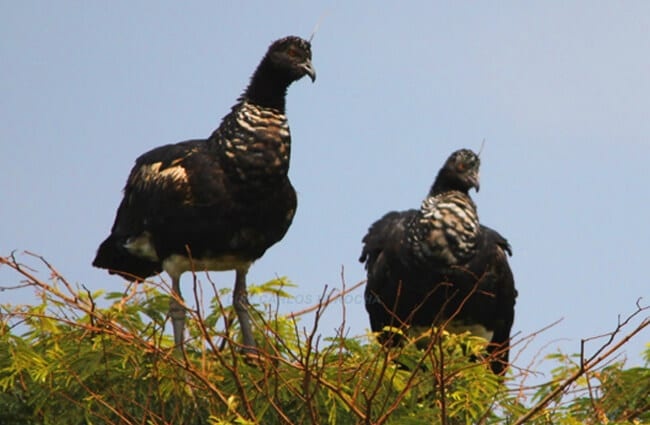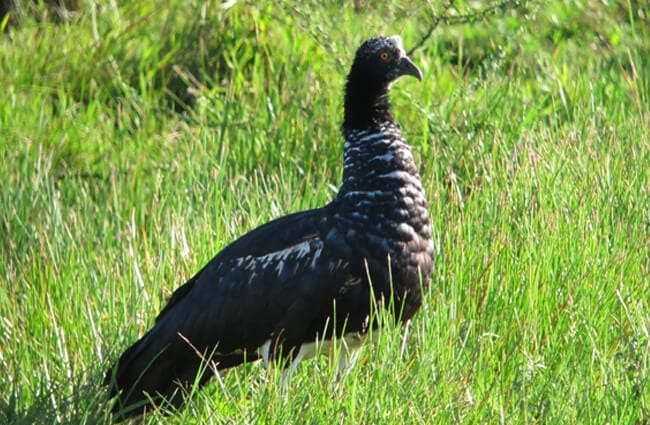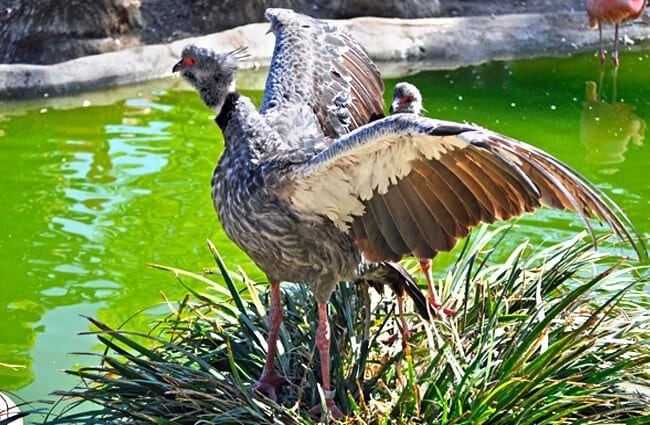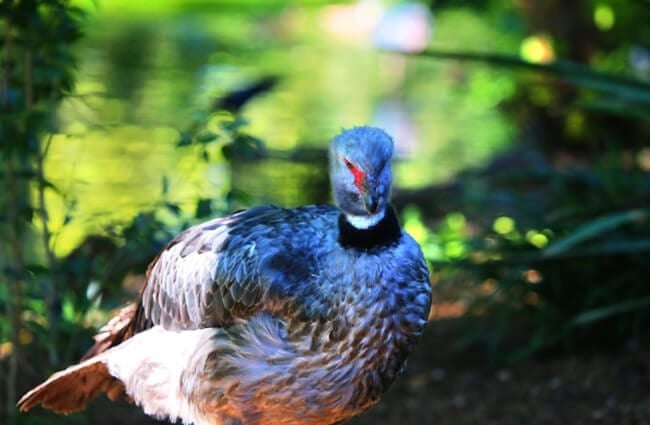An Introduction to the Astonishing Screamers
The avian world is filled with a stunning diversity of sounds, but few are as distinctive and, frankly, startling as the cry of the Screamer. These large, pheasant-like birds, belonging to the family Anhimidae, are a unique group with a fascinating history, intriguing behaviors, and a vital role in their wetland ecosystems. Often overlooked, Screamers deserve a closer look. This guide delves into the world of these remarkable birds, exploring everything from their physical characteristics and habitat to their unusual adaptations and interactions with both the environment and humans.

What Exactly is a Screamer?
There are two recognized species of Screamer: the Horned Screamer (Anhima cornuta) and the Southern Screamer (Chauna torquata), which is also called the Crested Screamer. All share certain defining characteristics. They are large birds, ranging from approximately 30 to 39 inches in length, with long legs and necks, giving them a somewhat prehistoric appearance. Their plumage is generally greyish, with darker or lighter variations depending on the species. The name “Screamer” isn’t just for show; these birds possess a unique syrinx – the avian vocal organ – that allows them to produce a loud, almost pig‑like bellow or scream. This vocalization serves various purposes, including territorial defense, attracting mates, and maintaining contact within flocks.
Habitat and Distribution
Screamers are native to South America, primarily inhabiting the wetlands, marshes, grasslands, and agricultural fields surrounding rivers and lakes. Their preference for open, accessible areas makes them often seen near human settlements and agricultural lands, which can lead to both conflict and coexistence.
- Horned Screamer: Found in the Amazon basin and surrounding areas, favoring dense vegetation and flooded forests.
- Southern Screamer (Crested Screamer): Inhabits the Pantanal region of Brazil, Paraguay, and Bolivia, as well as parts of Argentina and Uruguay. They prefer open grasslands and marshes.

A Look Back in Time: Evolutionary History
Screamers represent a fascinating example of avian evolution. For a long time, their taxonomic placement was debated, but modern genetic analysis confirms they are most closely related to the Anseriformes – the order that includes ducks, geese, and swans. However, they have diverged significantly, developing unique characteristics that distinguish them from their waterfowl relatives. Fossils suggest that screamer ancestors were once more widespread, with relatives found in North America and Europe. Their current distribution reflects a significant range contraction, likely due to climate change and habitat loss.
What’s on the Menu? Diet and Foraging Behavior
Screamers are primarily herbivorous, their diet consisting mainly of grasses, seeds, aquatic vegetation, and agricultural crops. They are efficient foragers, using their large feet to dig for roots and tubers. Unlike many waterfowl, they don’t have the specialized bill adaptations for filtering food from water. Instead, they consume vegetation directly, often grazing in flocks like terrestrial herbivores. Their preference for agricultural crops can sometimes bring them into conflict with farmers, but they also play a role in seed dispersal.
Love and Reproduction: Mating and Nesting
Screamers are generally monogamous, forming long term pair bonds. The breeding season varies depending on the species and geographic location, but typically coincides with the wet season. They construct large, bulky nests on the ground, often concealed within dense vegetation. The nests are made from grasses, reeds, and other plant materials. A clutch typically consists of 4-7 eggs, which are incubated by both parents for around 24-28 days. Chicks are precocial, meaning they are relatively mature at hatching and able to walk and feed themselves shortly after. Both parents care for the chicks, providing food and protection until they fledge, which occurs around 60-70 days after hatching.

Screamers and the Ecosystem: Ecological Role
Screamers play an important role in their wetland ecosystems. As herbivores, they help regulate vegetation growth. Their foraging activities also contribute to nutrient cycling. They are prey for predators such as foxes, jaguars, and raptors, contributing to the food web. Their nesting habits and presence also contribute to habitat structure and diversity. By consuming seeds and dispersing them through their droppings, they aid in plant propagation and ecosystem resilience.
Human Interactions: History and Current Status
Historically, Screamers were hunted for their meat and eggs. However, this practice has declined in many areas. Today, the biggest threats to Screamer populations are habitat loss and degradation, primarily due to agricultural expansion, urbanization, and wetland drainage. The Horned Screamer is listed as Vulnerable by the International Union for Conservation of Nature (IUCN). The Southern Screamer (Crested Screamer) is Near Threatened. Conservation efforts are focused on protecting and restoring wetland habitats and promoting sustainable land management practices.
Spotting a Screamer: A Guide for Wildlife Enthusiasts
If venturing into Screamer habitat, keep an eye out for large, pheasant-like birds with long legs and necks. Listen for their distinctive, loud, screaming calls. They are often seen foraging in flocks in open grasslands or near water. Binoculars are helpful for observing them from a distance without disturbing their behavior. Remember to maintain a respectful distance and avoid approaching or feeding them.
Caring for Screamers in Captivity
For zookeepers or aviculturists caring for Screamers, providing a spacious enclosure with access to both land and water is crucial. The enclosure should include plenty of vegetation for foraging and nesting. A varied diet of grasses, seeds, and aquatic vegetation is essential. Regular health checks are necessary to monitor their well‑being. Screamers are social birds, so keeping them in pairs or small flocks is recommended. Providing opportunities for enrichment, such as puzzle feeders and novel objects, can help stimulate their natural behaviors.

Fascinating Screamer Facts
- Screamers are one of the few bird species that have spurs on their legs, similar to those found in some mammals.
- Their unique syrinx allows them to produce a range of vocalizations, not just screams.
- They are surprisingly good swimmers and can dive underwater to forage for vegetation.
- Screamer eggs are relatively large and have a thick shell.
- Young Screamers are able to swim shortly after hatching.
A Final Note
The Screamer, with its unique vocalizations, evolutionary history, and ecological role, is a remarkable bird deserving of our attention and conservation efforts. By understanding their needs and protecting their habitats, we can ensure that these magnificent creatures continue to thrive for generations to come.


![Red Angus Closeup of a beautiful Red Angus cowPhoto by: U.S. Department of Agriculture [pubic domain]https://creativecommons.org/licenses/by/2.0/](https://animals.net/wp-content/uploads/2020/03/Red-Angus-4-238x178.jpg)




![Red Angus Closeup of a beautiful Red Angus cowPhoto by: U.S. Department of Agriculture [pubic domain]https://creativecommons.org/licenses/by/2.0/](https://animals.net/wp-content/uploads/2020/03/Red-Angus-4-100x75.jpg)

